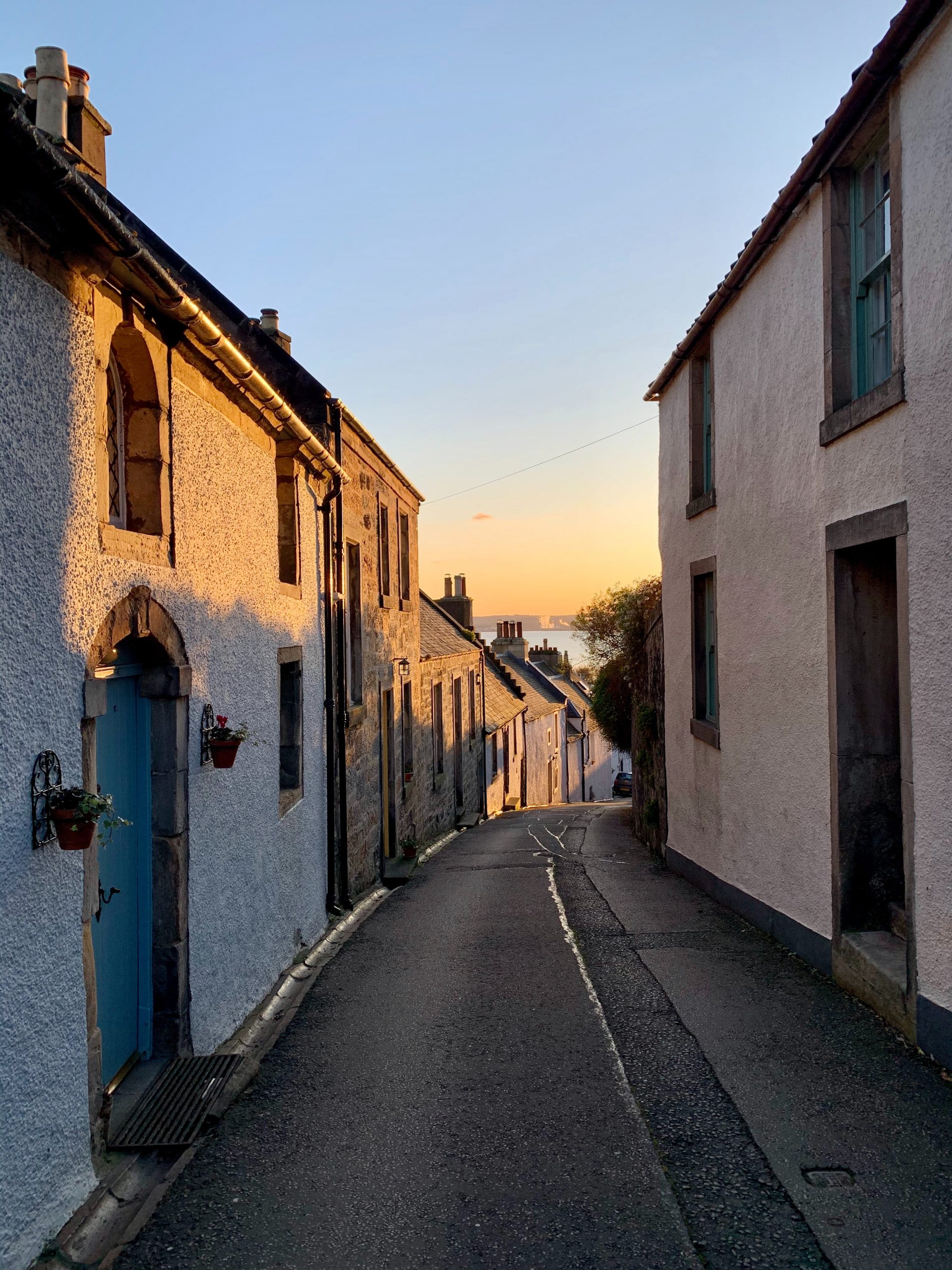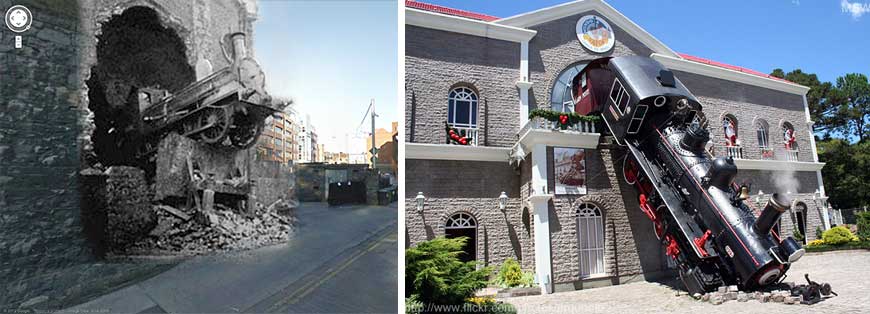
Accidents as heritage: our fascination with a specific type of train crash
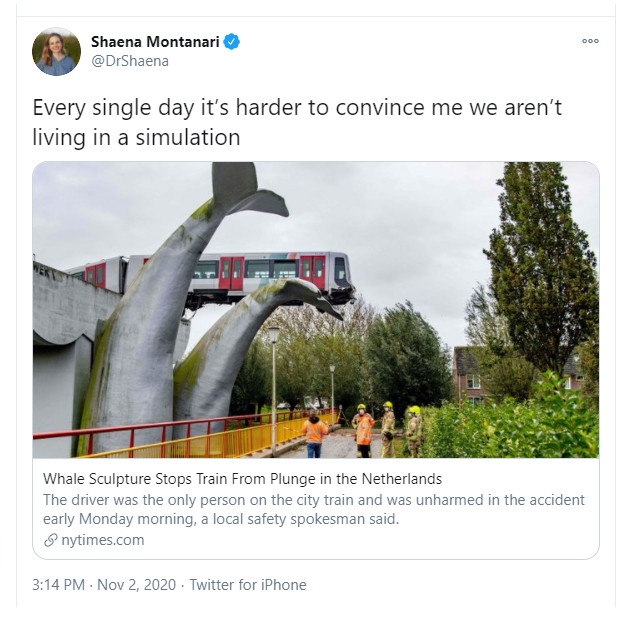
On Monday, November 2nd, 2020, a train belonging to the Rotterdam Metro network crashed through its barrier at Spijkenisse station and came to a standstill atop a work of art depicting two whale tails. Much to the surprise of everyone including the artist who fashioned the artwork, the structure proved strong enough to keep the entire train aloft. An understandably shaken driver was taken out of the train through a back door. As it was an empty train, no one was hurt; how the incident could occur is apparently still unclear.
If the image above comes across as somewhat familiar, that is quite understandable. As long as we’ve had terminuses – stations where train tracks end – trains have shown an unmistakable tendency to break free of these constraints and carry on. They’ve done so for a while now, and in the process created images that we can all reproduce.
Arguably the most famous example is the crash that took place at the Paris Montparnasse station in 1895 when the driver failed to stop the intercity express from Granville, which careered through the front of the building. Miraculously, only five people received minor injuries, but a flower girl was killed by falling debris in front of the station.
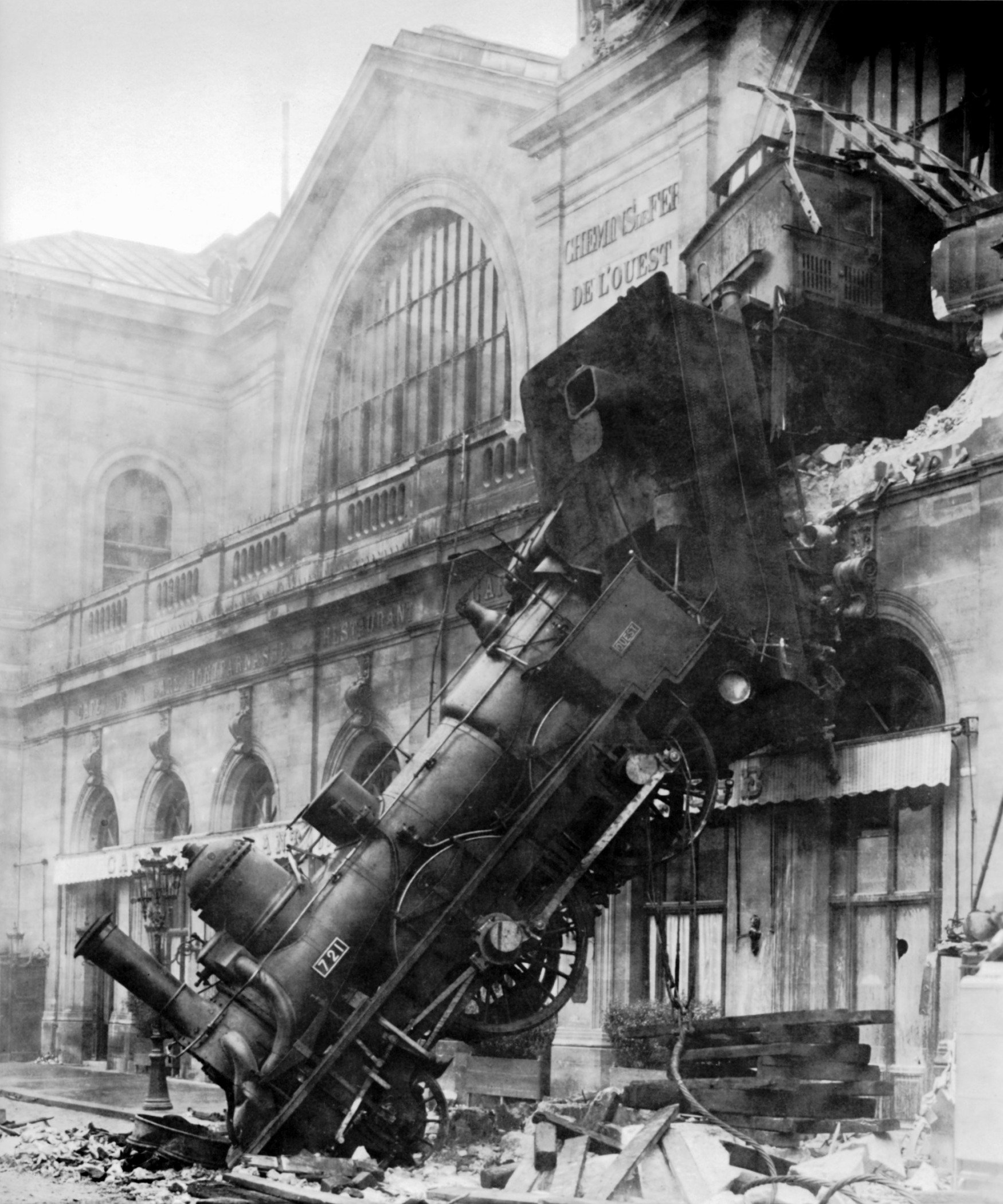
But that this was by no means an exclusive event became clear when a mere five years later, the Dublin station of Harcourt Street saw a cattle train drive through the front of the station. No fatalities this time, although the driver was seriously hurt.

In the Netherlands, we have experienced two of these occurrences; the first took place in 2003 when a train slowed down too late and careered into a chocolate shop at The Hague Central Station (below). No one was hurt (although one can imagine the shop attendant got a serious scare) and the chocolate shop was eventually rebuilt, but the new stall possessed a window with a view of the tracks so the employees could at least make their escape should another train attempt to do the same. In 2011, a maintenance train failed to stop at the small terminal station in Stavoren, taking the whole building with it in the process. Two people received minor injuries.
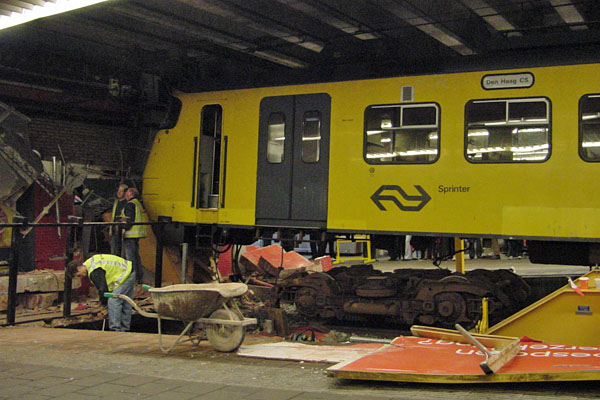
While these were all obviously serious accidents, they undeniably possessed a grotesque element as well. And because of this mix of tragedy and slapstick, they tend to leave a permanent mark on the public’s imagination. Photos of the Montparnasse crash have become iconic images, the symbol almost of an entire era of European culture, when technology took the continent by storm, with all the risks that entailed.
In recent years, images of the Montparnasse and Harcourt crashes have even been recreated – the first in an Argentinean theme park, the second virtually, using a combination of Google Maps imaging and historical photographs. I would say that the second method is far more successful, because it re-injects what was a calamitous event into our daily existence, and can help us much better to experience its effect.

Can we already say something about the legacy of the Spijkenisse crash? Although recovery got under way on the same day, a petition was quickly set up to keep the accidental artwork and to “embrace the whale waggon accident”. It even received the support of the artist. If that happens, we will not only have embraced a uniquely European phenomenon, but will have given it a role in understanding how our technology can also turn against us, if we’re not careful.

